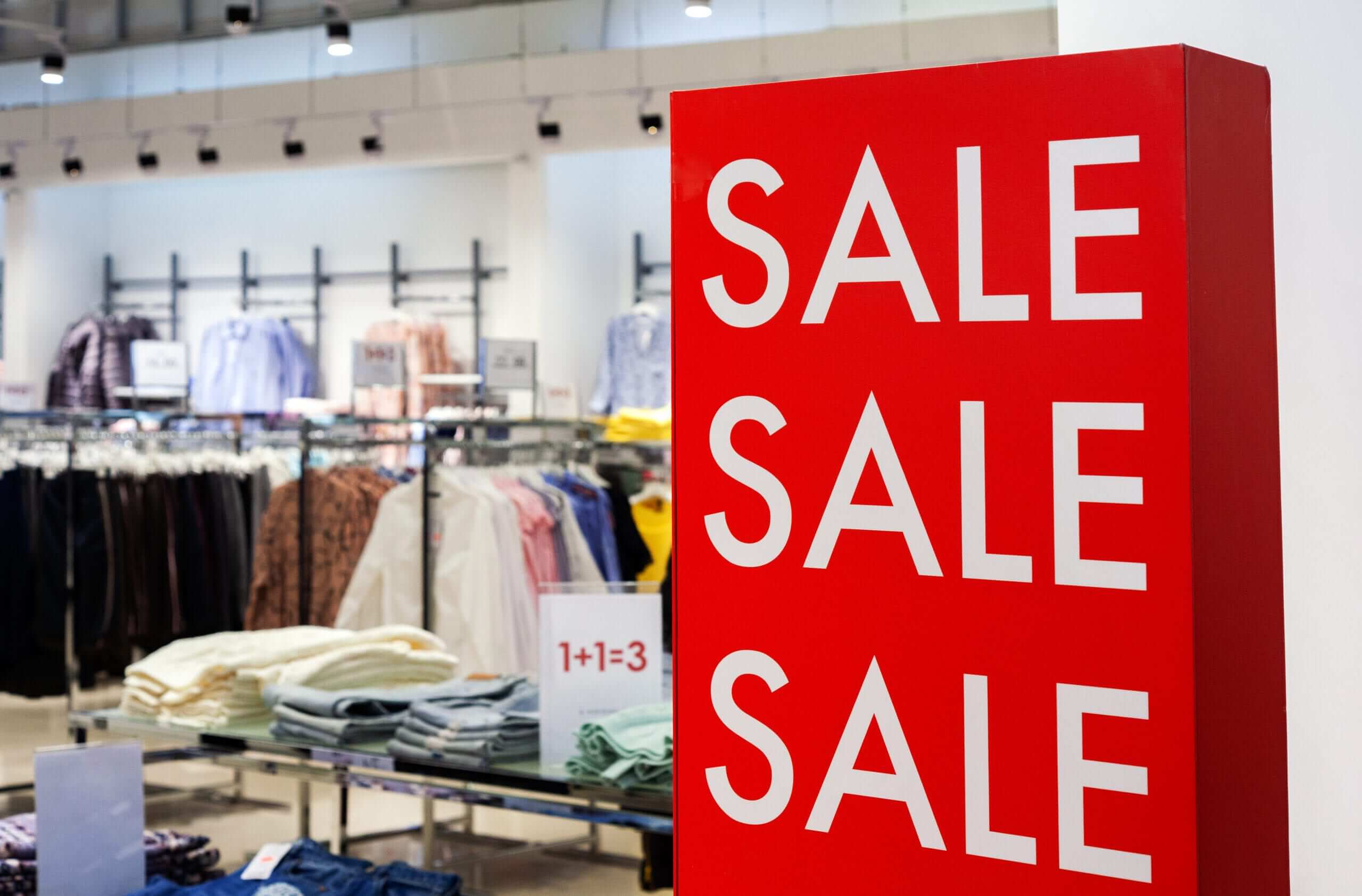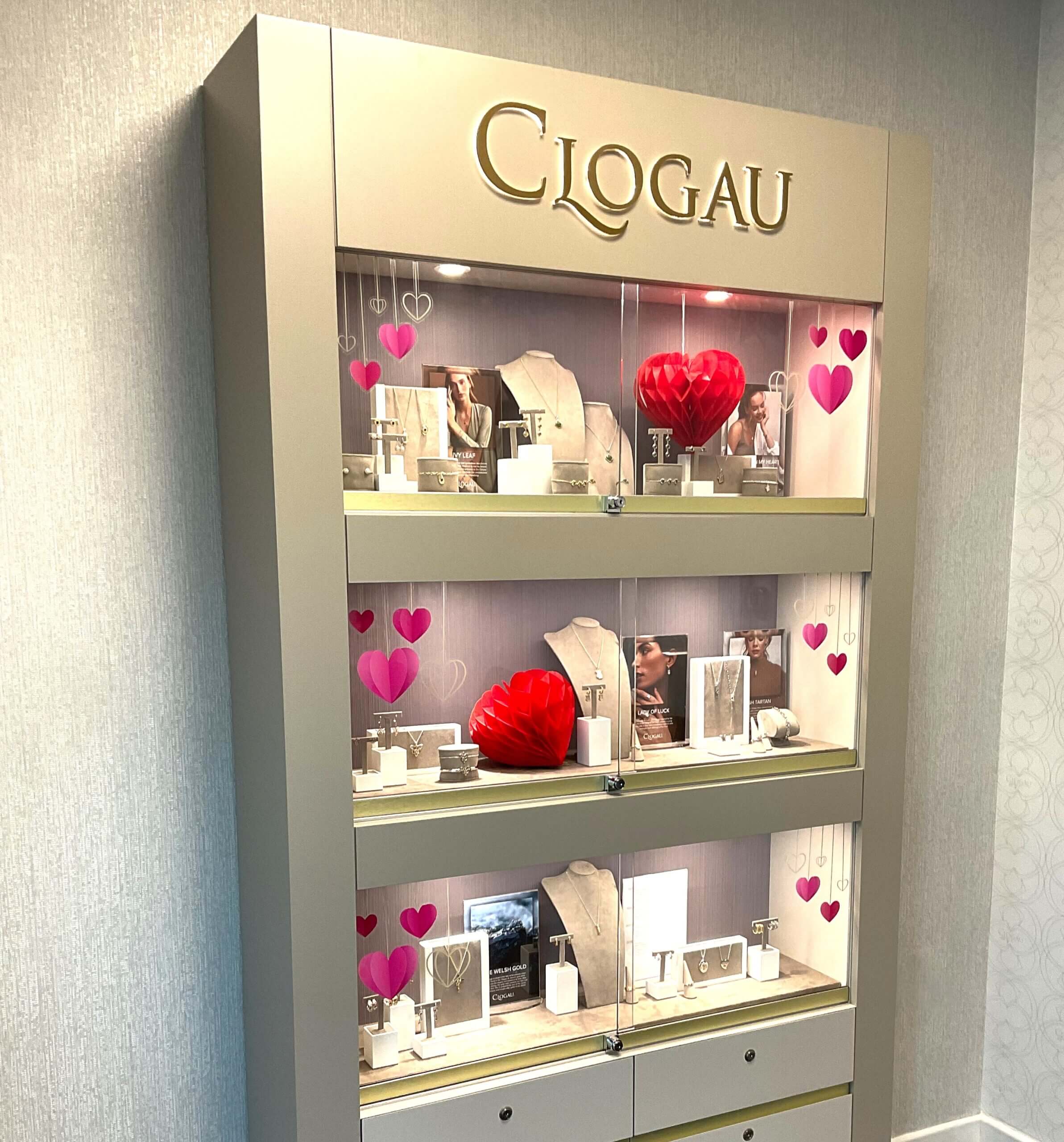Finding ways to get ahead of the competition is imperative for a business to succeed.
If that has always been true, then it’s even important against a backdrop in which, according to the Department for Business, Energy & Industrial Strategy’s latest figures, a whopping 5.5 million businesses operate in the UK.
Not only must these enterprises offer exceptional products or services together with effective marketing, but they also need to use strategic tools and methods to enhance the consumer experience and increase sales.
More recently, the idea and concept of point of sale (POS) via signage and displays has emerged as a game-changing approach to influence buying decisions.
In this article, we will help you to better understand POS by delving into its meaning, benefits and drawbacks, and its importance for small businesses. We will also share real-world examples to illustrate its influence.
By providing you with a comprehensive understanding of POS printed marketing materials, we hope to shed light on the transformative impact they have had on modern-day commerce.
What does point of sale (POS) mean?
Point of sale, as the name suggests, refers to the precise moment and location where a customer makes a purchase from a business.
It is when an exchange occurs; a customer pays money for a product or service.
However, POS is more than a simple place where a transaction happens. Instead, it has evolved into a powerful marketing tool that can influence customer buying patterns.
Today, POS signage and displays are used as part of marketing and sales strategies to increase footfall, first, and purchases later once the customer is instore.
What is the concept of point of sale?
Understanding the concept of POS is crucial for leveraging its potential within your business.
As mentioned above, it is more than a simple transaction of goods for cash; it is a process that encapsulates the whole customer journey from entering a store, whether that’s in person or online, to the final purchase.
Any well-designed POS visual materials should seamlessly integrate into this journey to influence a customer’s decisions while they shop and before they reach the checkout.
With that in mind, it is important to develop an understanding of the psychology behind decisions. This includes having a grasp on how behaviours like impulse buying affect customers passing by your store and once they are inside. The very presence of enticing displays can tempt them to make purchases they hadn’t planned to.
Incorporating insights from psychology and market research into how customers think and act at the point of sale is key.
This is where our team comes in as point of sale consultants; they possess the knowledge and experience of how to persuade customers to put another product in their basket just before they pay.

Why is POS important?
In a competitive business environment, where an estimated 4.4 million new businesses are started each year, the importance of integrating intelligent POS printed materials cannot be overstated.
Effective signage and displays are more than simply aesthetic enhancements; they are strategic, targeted tools that, when correctly implemented, will help to increase sales, boost your brand and offer vital information to customers.
There are many reasons why POS signage and displays are important, but arguably the most crucial factor is the sheer power of visual communication.
This can be broken down into three key areas that, when combined, make POS printed materials one of the most empowering tools for modern businesses.
They are:
Brand consistency
Cleverly designed POS signage will not only help to convey the desired message and direct customers to specific products, but it will also reinforce your brand’s identity.
Visual merchandising
POS signage and displays should also include an element of visual merchandising, which is the creative side of your printed materials that produces a striking design that tells a story and encourages customers to buy.
Informative signage
Another element of any POS printed signage and display is producing materials that are informative in guiding customers where you want them to be, and helping them understand the buying process before checkout.
Why do small businesses need POS?
According to a 2020 survey conducted by Salesforce, 50 per cent of small businesses report that POS is integral to their operations.
It is generally assumed that large companies are the only organisations investing heavily in POS strategies, but the reality is that small businesses are among those who can benefit most. Harnessing the power of signage and displays in your business can have an even more profound effect and facilitate long-term growth.
POS signage and displays are the perfect way for small businesses with limited cash and resources to level the playing field with competitors and compete with larger rivals.
They can deliver a high return on investment, allowing small businesses to create visually stimulating, on-brand displays that capture the attention of customers and drive sales without breaking the bank.
It is also a clever strategy for competing with larger competitors by effectively leveraging the physical retail space you do have to generate positive imagery.
Advantages and disadvantages of POS
As with any marketing strategy, you should have a clear understanding of both sides to make an informed decision on whether this strategy is right for your business.
Advantages
Increased sales
One of the most significant benefits of well-designed and cleverly executed POS signage is that it can directly lead to higher sales figures. It only takes one strategically placed sign in your store to identify selected products for customers before they reach the checkout.
Promotion
There are countless ways to promote products, but when it comes to shopping in store, attractive signage and displays are a tried and tested method to grab customers’ attention. You will also find that placing displays in your customer’s eyeline when looking at specific products can help to cross-sell related items.
Customer experience
According to Forbes, 84 per cent of companies that work to improve their customer experience report an increase in revenue. POS signage is a great way to contribute to the overall shopping experience by enhancing navigation, providing product information, and creating a visually appealing environment. Well placed and beautifully designed signage can also develop a sense of trust and professionalism that is likely to result in customers returning.

Disadvantages
While POS signage comes with a wide range of advantages, there are also a number of counterpoints to take into consideration before deciding whether this is the right area for your business to invest in.
Upfront cost
Like with any investment into your business, POS signage will require an initial cash injection to secure high-quality, well-designed signage and displays. Although the return on investment should make the initial costs worthwhile in the long term, your business must still consider how much you are willing to spend.
Maintenance
If you choose to invest in POS signage, it is essential you keep it fresh and updated. This can be time consuming and costly, but if done well it can become a key part of your marketing strategy.
Bad designs
Poorly-designed POS signage and displays can have the opposite effect on customers and risk negatively impacting sales and brand perception. It is always best to employ the services of a POS print and design team who can ensure every sign is designed with your customer in mind.
Excessive signage
Implementing excessive POS signage can have the opposite effect in your space as you risk overwhelming customers with conflicting offers and/or offering too much to look at.
What types of POS products do you sell?
Whether you want to announce a new product, provide information about a seasonal sale or create an immersive shopping environment, different POS products will serve their own unique purpose as part of your marketing strategy.
As part of our point of sale service, we currently offer a wide selection of point of sale display products, including:
- Posters
- Window graphics and displays
- Vinyl floor graphics
- Freestanding displays (FSDU’s)
- Counter displays
- Totem displays
- Bollard covers
- Dumpbins
- Hanging signs
- Display cubes
- Shelf-edge ticket strips/wobblers
- Strut cards
- Cardboard cutouts
While our offerings are extensive, it should be noted that printed materials like leaflets, banners, and flyers, while integral components of a comprehensive POS display, aren’t typically considered individual point of sale materials. Instead, they often serve as supplementary marketing tools to provide additional information or promotional messaging to customers.
Examples of POS
Beyond the ideas behind POS signage and displays, it is crucial to understand how it can be practically implemented in real-life settings.
So, here we explore a few examples of effective point of sale signage across various industries.
Clothing retailers
In-store sales and seasonal point of sale printed materials are essential for clothing retailers towards the end of each season. These stores require captivating window displays to draw in passers-by before they can stock their floors with the new season’s products. Branded window vinyl often accompanies the display set.
Throughout many clothing stores, you’ll see branded hanging signs located to support the customer’s journey and buying experience.
For example, near to the checkout counter you will often see smaller, strategically placed products like perfumes, accessories, cosmetics and gift cards.
These impulse buys are within easy reach of customers, and when paired with clever POS signage, they are encouraged to make last-minute purchases that seem too good to miss.
Supermarkets
If you’ve ever walked around a supermarket, you’ll see the familiar hanging signs as well as displays at the end of each aisle to promote products.
For instance, during the festive season you might find a display with Christmas cards, wrapping paper, and gift bags. These displays are designed to catch shoppers’ attention as they move from aisle to aisle.
While walking, you’ll find shelf talkers and wobblers, which are the small signs attached to shelves to highlight discounts.
In recent years, you may have seen the supermarket chain Tesco use these POS printables to highlight the lower prices for their loyalty card members. When customers are at the point of decision-making, these can make all the difference.
Restaurants
In many restaurants, bars and cafes, you will find tabletop tent cards to promote daily specials, speciality drinks, desserts or loyalty programs. These POS cards are strategically placed on tables directly in front of customers for them to browse while waiting to be served.
It has recently been estimated that more than 60 per cent of buying decisions are made at the point of sale, demonstrating a clear link between this moment and increased sales.
It is clear that POS has evolved into an incredibly powerful tool that capitalises on those few seconds when a customer decides whether to make an additional purchase.
In a world where competition is fierce in every industry and businesses are fighting to grab consumers’ attention any way they can, POS signage and displays have never been more important.
Get in touch with our team!
If, as part of your POS strategy, you are interested in integrating powerful point of sale printing and design, look no further.
As point-of-sale consultants, our goal is to persuade your customers to put another item in their basket just before they reach the checkout, and we know they’re more likely do this if your point of sale is effective.
Why not get in touch with our team today to discuss how we can help design and supply engaging POS for your business?
Call us on 0115 951 2468 or send an email to [email protected].
Back to case studies


